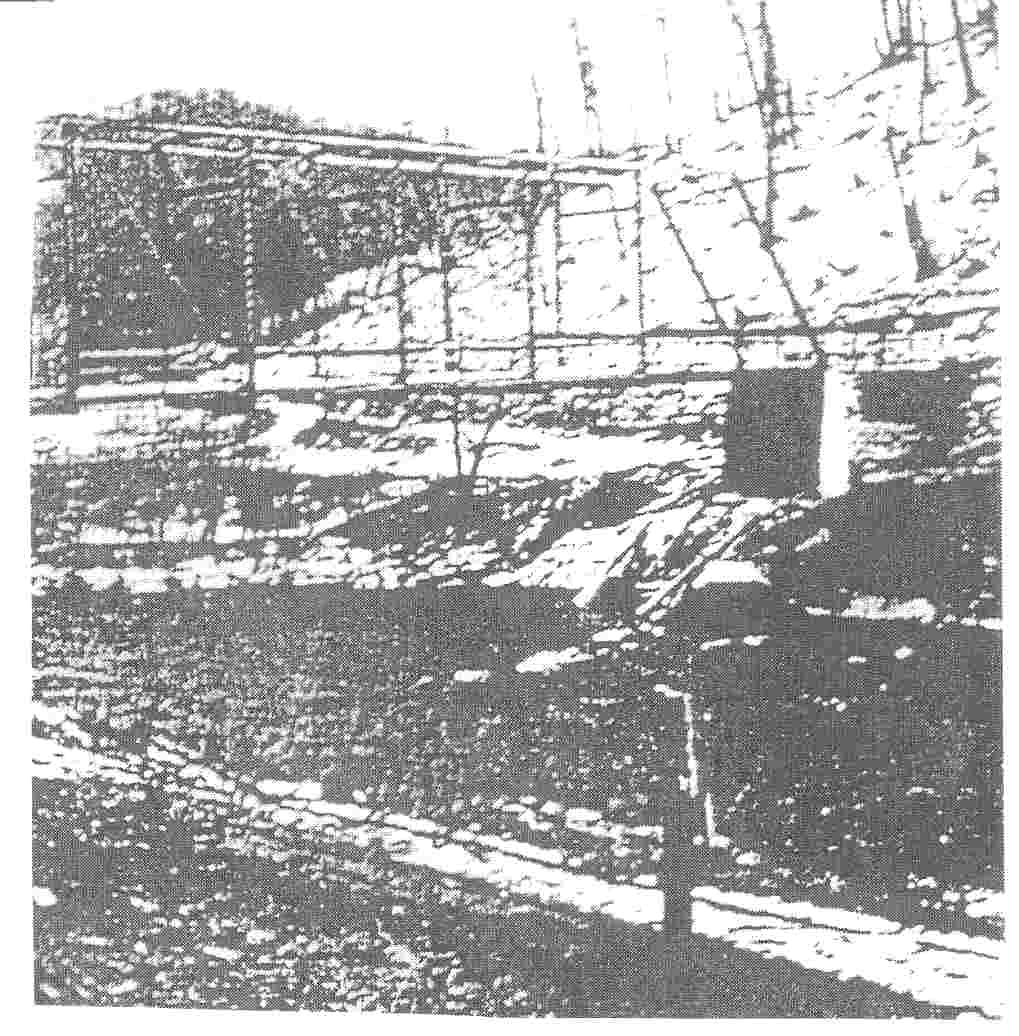
THE BEN AND DIXIE FARTHING farm was located on the banks of the WATAUGA RIVER in LAUREL CREEK DISTRICT, Watauga County, N.C. A huge "self supporting" bridge spanned the river right there at our farm property. The structure had a huge pier for support on the bank at each end of the bridge, however there was no support piers in the river. The structure had huge steel girders running overhead which supported the structure, as was the custom on many large bridges that spanned the streams in that long ago era.
In August 1940 heavy rain started falling thru-out this part of western N.C. By the 10th of August, the ground was getting saturated by the constant rains and streams began to rise. On the morning of August 13, I walked to the top of the ridge on the farm immediately behind our farmhouse. This ridge overlooked both the Cove Creek and Watauga River valleys. The streams had overflowed their banks and covered the "BOTTOM" (level lands) along both valleys. The Cove Creek enters the Watauga River about 150 yards above the bridge located in front of our farmhouse. By the middle of the day, the river level had risen to a few feet of the bridge floor.
The largest flood prior this was the 1916 flood. There was a marker or scar on a large tree immediately across the river near the bridge, and, it was generally known this marked the height of the flood waters in that early flood. About noon, my brother, Wheeler Farthing, who was a member of the faculty at Cove Creek High School, ran across the brige to determine if this marker was visable. He came running back and reported the water was already above this marker,which meant this area was having a record breaking flood.
All morning long, much debris including trees and a multitude of haystacks were being swept down the river. Also small buildings were washed down the flooded river. By mid afternoon, flood waters started sloshing across the bridge floor.
In that era, much of the level or BOTTOM land along the Watauga River and Cove Creek was used for growing hay crops. Since there were almost no hay bailers in the county, farmers would set long poles in the ground and then would "stack" the newly mown hay around these poles. Many hay fields were located along both the Watauga River and the Cove Creek for several miles up river from our farm.
As the bottom lands became covered with flood waters, the hay stacks began "floating" right out of the ground and would get awept down the river and also Cove Creek. Sometimes, a clump of 3 or 4 hay stacks would hit the bridge at the same time. The middle of the bridge would be knocked a couple of feet down river,causing it to shake violently, after which, it would spring back to its normal position, as the stacks were forced under the structure. Since this structure was the self supporting type, with no piers in the river, this gave the bridge a SPRINGY or FLEXIBLE effect and this is why it would spring back and forth as the hay stacks would hit it.
Since 1938,we had gotten our electric current from Ben Wards sawmill complex, located a few hundred yards down river.Ben Ward had a water powered electric dynamo\generator and serviced several local houses with electric service. That morning, our electric went off. We discovered the next morning that the flood waters had washed out his entire sawmill complex, electric generator, grist mill, 2 of his large logging trucks plus the large garage where they were parked, along with many stacks of lumber.
My dad became very concerned that the bridge would be washed off its piers, by the trees and hay stacks, etc. which had pounded in all afternoon. Late that evening, as we started to eat supper, he went out in the yard to take another look at the situation. As he came back into the kitchen, he announced," WELL, THE BRIDGE IS SAFE NOW!! THE WATER HAS GONE DOWN A FEW INCHES AND THERE IN NO MORE TRASH COMING DOWN THE RIVER!! AT THAT VERY SECOND, WE HEARD A LOUD CRASHING SOUND. WE RUSHED OUT THE YARD AND SAW A HOUSE HAD CRASHED INTO THE BRIDGE!!
The house was the POLLY WARD house and was situated a few hunderd feet from the Cove Creek. It had been surrounded by flood water all afternoon but late that evening, as it floated closer to the main current of Cove Creek, it got caught in the current and now was resting against the bridge.
It started pushing against the bridge, which caused a terrible screeching sound. It would stop a few seconds and then start pushing again a few inches at a time. All this time we could hear the sound of the house poping and cracking, probably caused by the house beginning to come apart. After probably 2 or 3 minutes, the bridge had been pushed enough so that it became overbalanced and then it tumbled off the piers and disappeared under the water.
The next morning, after the waters had gone down, we saw that it had sunk and stopped about 150 yards down river and was twisted into a terrible mess. According to published reports, all Watauga River bridges were swept away except the "low water" bridge located at my Grandfather Louis Glenn's farm 3 miles down river.
In my lifetime, I have seen nothing as dramatic as the Watauga River Bridge being swept away during the great flood, August 13, 1940!! BY BAXTER FARTHING.
PREVIOUS PAGE...NEXT PAGE
 |
||